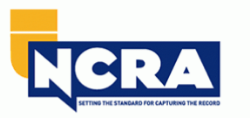Trial Presentation Creating Compelling Displays for Courtroom Success
Trial Presentation Creating Compelling Displays for Courtroom Success
Blog Article
Captivate the Jury: Important Elements of a Powerful Trial Presentation
In the realm of lawful campaigning for, the ability to mesmerize a jury is paramount to the outcome of a test (trial presentation). Necessary aspects such as comprehending the target market, crafting an engaging narrative, and mastering spoken and non-verbal interaction are important components of an efficient presentation. Furthermore, the strategic use of visual help can substantially enhance comprehension and retention of essential arguments. As these aspects link, they form a natural technique that not just notifies yet additionally involves jurors on multiple degrees. What specific strategies can really change a basic presentation right into a remarkable experience for the jury?

Recognizing Your Audience
Understanding your audience is an essential aspect of effective trial discussion. A successful presentation pivots on the ability to grasp the demographics, values, and predispositions of jurors. This comprehension educates exactly how arguments are framed, evidence exists, and psychological allures are crafted, ensuring that the message resonates with the jurors on a personal degree.
Research suggests that jurors come from varied backgrounds and may have differing levels of recognizing concerning legal procedures. Furthermore, comprehending the jurors' potential biases and life experiences enables the trial presenter to prepare for arguments and address concerns proactively.
Reliable trial discussion likewise involves observing jurors' responses during the process. Engaging with jurors as people instead than a collective device is necessary in promoting a solid connection in the court room.

Crafting an Engaging Story
Crafting an engaging story is important in directing jurors with the complexities of a case. A well-structured story not only simplifies elaborate legal ideas however also involves jurors on a psychological level, making the details a lot more relatable and unforgettable.
This message ought to resonate with the jurors' values and experiences, fostering a connection that goes beyond simple truths. This chronological strategy can help jurors adhere to the development of occasions, highlighting cause and result.
Integrating human elements-- such as personal tales or stories-- can even more boost the narrative's effect. These components evoke empathy, enabling jurors to envision the repercussions of the situation on the real worlds. Additionally, using a consistent style throughout the discussion reinforces the primary disagreement, making it easier for jurors to keep crucial factors.
Inevitably, an engaging narrative transforms a test presentation from a simple address of realities right into a convincing tale that astounds the court, encouraging them to deliberate with both reason and emotion.
Using Aesthetic Help
Incorporating visual help right into a test discussion can substantially improve jurors' comprehension and retention of info. Visual materials such as charts, layouts, pictures, and video clips can change complicated legal concepts and evidence into conveniently digestible styles. By engaging several detects, these help allow jurors to imagine the situation's key aspects, making it much easier for them over at this website to adhere to along and realize elaborate information.
Moreover, properly designed aesthetic help can emphasize crucial points and emphasize partnerships between different items of proof. As an example, timelines can properly highlight the series of occasions, while annotated pictures can clear up particular details pertinent to the situation. This not just aids in understanding but also reinforces the story provided by the lawyer.
Extremely complex or cluttered visuals might overwhelm jurors and detract from the message. Eventually, reliable aesthetic interaction can be an effective tool in persuading jurors and assisting them get to educated verdicts.
Mastering Verbal Communication
Efficient spoken interaction is crucial in a trial presentation, as it functions as the main methods whereby attorneys communicate their disagreements and attach with jurors. Grasping this skill entails clarity, persuasion, dig this and interaction. Attorneys must express their factors clearly and concisely, staying clear of legal jargon that might perplex jurors. Simplicity in language fosters understanding and helps jurors grasp complex issues presented during the trial.
Moreover, tone and pacing significantly influence just how messages are obtained. A certain tone shares authority, while appropriate pacing permits jurors to soak up info without feeling bewildered. Lawyers must likewise vary their vocal inflections to highlight bottom lines and maintain jurors' rate of interest throughout the presentation.
Furthermore, the organization of spoken debates is vital. Structuring the narrative rationally and coherently assists jurors adhere to the lawyer's logic, making it less complicated for them to keep essential information. Utilizing persuasive methods, such as storytelling, can also improve the emotional resonance of the arguments offered, thus producing an extra extensive connection with jurors.
Ultimately, grasping spoken communication not just enhances a lawyer's situation yet likewise fosters click here now trust fund and rapport with the jury, significantly improving the opportunities of a desirable decision.

Involving With Body Movement
Nonverbal communication plays a crucial duty in trial discussions, commonly conveying messages that words alone can not share. Body movement, encompassing gestures, pose, faces, and eye contact, significantly affects how jurors regard the credibility and genuineness of the speaker. A confident position, with shoulders back and an open posture, can instill trust fund, while closed-off body language may suggest defensiveness or unpredictability.

Faces should mirror the emotions connected with the situation, enhancing the narrative being offered. An honest expression during a touching minute can evoke compassion and reinforce the psychological charm. Ultimately, understanding body language is essential for efficient test presentations, as it boosts verbal communication and develops a compelling presence that reverberates with the jury.
Conclusion
In conclusion, astounding the court requires a tactical technique that includes recognizing the audience, crafting a compelling narrative, making use of aesthetic aids, grasping spoken interaction, and involving through body language. Each aspect plays a crucial role in producing an effective test discussion that reverberates with jurors on both emotional and intellectual levels (trial presentation). By integrating these elements successfully, lawful specialists can significantly enhance their capability to convince and affect court decision-making
Report this page